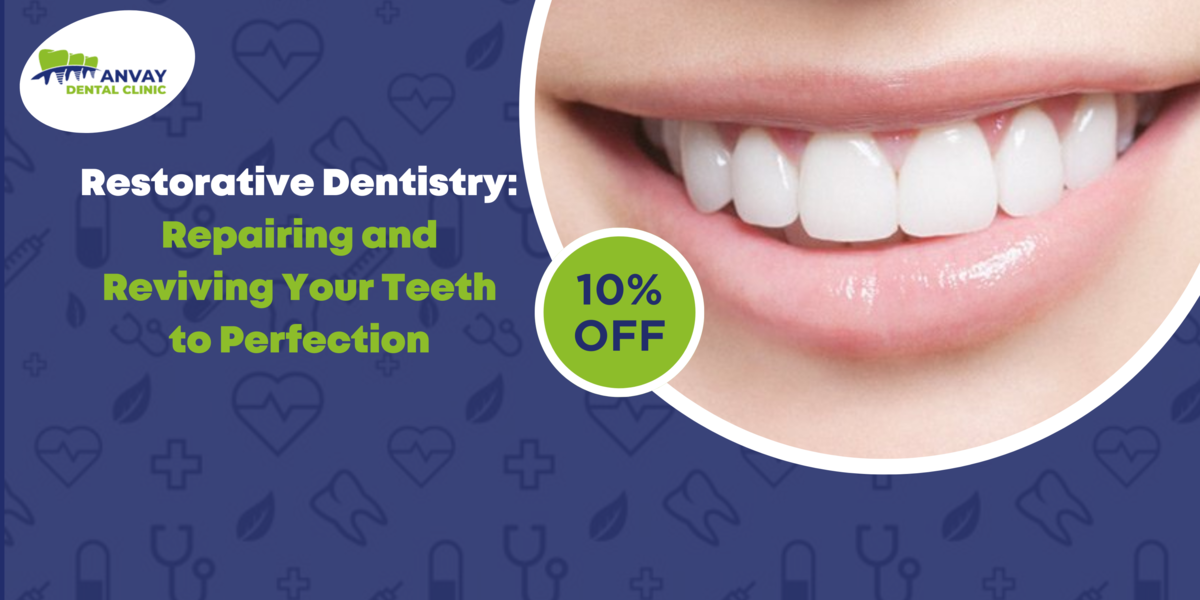Blog
Restorative Dentistry: Repairing and Reviving Your Teeth to Perfection

Introduction
Have you ever wondered how dentists can transform damaged and worn-out teeth into healthy and beautiful smiles? The answer lies in the field of restorative dentistry.
Restorative dentistry is a branch of Dental care that focuses on repairing and reviving damaged teeth to their former glory.
In this article, we will explore the world of restorative dentistry, understand its various treatments, and discover how it can help you regain your dental health and confidence.
Understanding Restorative Dentistry
Restorative dentistry is a specialized branch of dental care that aims to restore the function, aesthetics, and integrity of teeth that have been damaged due to decay, trauma, wear and tear, or other oral health issues.
Unlike cosmetic dentistry, which primarily focuses on enhancing the appearance of teeth, restorative dentistry is primarily concerned with repairing and preserving dental health.
Restorative dentistry procedures are designed to address a wide range of dental problems, including cavities, chipped or Cracked teeth, missing teeth, misaligned teeth, and gum diseases.
By utilizing advanced techniques and materials, restorative dentists can effectively repair and replace damaged or missing teeth, resulting in improved oral health and a beautiful smile.
Common Restorative Dentistry Treatments
Dental Fillings:
Dental fillings are used to treat cavities caused by tooth decay. In this procedure, the decayed portion of the tooth is removed, and the resulting cavity is filled with a material such as composite resin, amalgam, or porcelain. Dental fillings not only restore the tooth’s shape and function but also prevent further decay.
Dental Crowns:
Dental crowns, also known as caps, are used to restore severely damaged or weakened teeth. A crown is a custom-made restoration that covers the entire tooth, providing strength, protection, and an improved appearance. Crowns are commonly made from materials like porcelain, ceramic, metal alloys, or a combination of these materials.
Dental Bridges:
Dental bridges are used to replace one or more missing teeth. A dental bridge consists of an artificial tooth or teeth, called pontics, that are supported by dental crowns on adjacent healthy teeth or dental implants. Bridges not only fill the gap caused by missing teeth but also restore proper chewing function and prevent neighboring teeth from shifting.
Dental Implants:
Dental implants are a revolutionary solution for replacing missing teeth. A dental implant is a titanium post that is surgically placed into the jawbone, acting as an artificial tooth root.
Once the implant integrates with the bone, a custom-made crown is attached to the implant, providing a natural-looking and functional replacement tooth. Dental implants offer several benefits, including stability, durability, and improved oral health.
Dentures:
Dentures are removable appliances used to replace multiple missing teeth. They can be either full dentures, which replace all the teeth in the upper or lower jaw, or partial dentures, which replace several missing teeth while preserving the remaining natural teeth. Dentures improve chewing ability, speech, and facial appearance, restoring confidence and comfort.
Root Canal Treatment:
Root canal treatment is performed when the innermost part of the tooth, called the pulp, becomes infected or damaged. During the procedure, the infected pulp is removed, and the root canal system is cleaned, disinfected, and sealed. A crown is usually placed on the treated tooth to protect it and restore its function.
Conclusion
Restorative dentistry offers a range of treatments that can repair, restore, and revive your teeth to perfection. Whether you have cavities, chipped teeth, Missing teeth, or other dental issues, restorative dentistry can provide effective solutions to improve your oral health and bring back your smile’s natural beauty.
If you’re concerned about the condition of your teeth, don’t hesitate to consult a restorative dentist who can evaluate your specific needs and recommend the most suitable treatment options.
Remember, maintaining good oral hygiene practices, such as regular brushing and flossing, combined with routine dental check-ups, can help prevent many dental problems and ensure the longevity of restorative treatments.
Invest in your dental health today and experience the transformative power of restorative dentistry.

